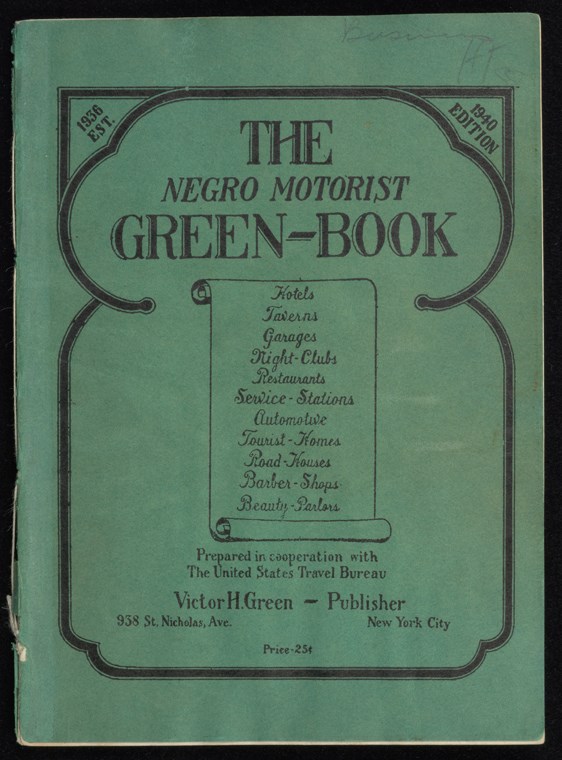Last updated: October 26, 2021
Article
The Green Book and Alaska

Schomburg Center for Research in Black Culture, Manuscripts, Archives and Rare Books Division, The New York Public Library. "The Negro Motorist Green Book: 1940" New York Public Library Digital Collections
For those of you who watched or read about the 2019 Oscars, you’re probably aware that "Green Book" took home the top award for best picture. The movie takes its name from the actual Green Book, a travel guide published by and for African Americans who wanted to travel in a time of institutionalized racial discrimination (known as the Jim Crow era).
Originally published by Victor H. Green, a black postal worker from Harlem, the Negro Motorist Green Book was published annually from 1937 to 1966, and provided a list of businesses in the US that African Americans could patronize without being harassed. Green’s intention was to make travel safer and easier for African Americans. The Green Book played a critical role in protecting black travelers throughout the country—including Alaska.[1]
Although Alaska did not have as many roads or as much tourism as other places in the US, the territory was on the minds of the Green Book editors by 1948.[2] The first and only African-American friendly business to be listed that year was the Savoy Hotel in Fairbanks. By 1952, the Green Book listed national park information in the guide, including Mount McKinley. The Savoy Hotel continued to be the only Alaska establishment listed in the guide from 1948 until 1961. In 1962, the Westward Hotel in Anchorage, the Baranof Hotel in Juneau, the Ingersoll Hotel in Ketchikan, and the Travelers Inn in Fairbanks joined the Savoy as being African-American friendly accommodations.
The list of businesses published in the Green Book continued to grow and began to include international destinations. After Civil Rights legislation was passed in 1964, the Green Book only published one more edition. In the front of the final publication was a bulletin proclaiming that “The Civil Rights Act of 1964 is a new bill of rights for everyone, regardless of race, creed or color,” and that “effective at once, every hotel, restaurant, theater or other facility catering to the general public” must follow this law.
Archived copies of the Green Book are an important reminder of the Civil Rights struggle in all states. For more in-depth history of the Green Book, check out "The Roots of Route 66" by Candacy Taylor, "How the Green Book Helped African-American Tourists Navigate a Segregated Nation" by Jacinda Townsend, and/or the new documentary "The Green Book: Guide to Freedom."
[1] Ahead of much of the US, Alaska passed equal rights legislation in 1945 largely due to the efforts of Elizabeth Peratrovich. However, African Americans and Alaska Natives continued to face discrimination in Alaska despite this law.
[2] Following the post-World War II economic boom, tourism expanded into Alaska and travelers took advantage of infrastructure built during the war, including the ALCAN Highway. African-American regiments made up a significant portion of the labor force constructing the ALCAN in a project sometimes compared in scale to the Panama Canal because of the severe conditions and challenging terrain.
